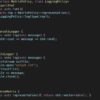Engineer-tested hardware hacks: insider tips and trick
(By Kickmaker engineers)
Ah! The famous geek gimmick “When in doubt, reboot”, or the famous “Have you tried to turn it off and on again?”. We all know it. And no surprises, when Alysée asked us to share tips, that was the number one quick joke to be quoted on Teams. So yes, but no. Let me explain.

Long Story Short
For sure, we all do it from time to time. You are in dev or debug mode, you use your system in a somewhat cavalier manner for your tests and clearly not in a normal usage. Obviously, when an aberrant result occurs (your CAN debugger seems dead, a slightly strange connection problem after several restarts of the software occurs…) your first reflex is:
“That’s nothing, I was acting stupid, he didn’t like that I restarted too quickly. Look, I reboot and it works fine. Okay, let’s move on…”
The worst part is that it’s often just that. But when working on industrial or medical projects, you sometimes need to go further.
The time will come to carry out extensive EMC tests, cycling and endurance tests, and to find during these phases that the untimely crash ignored earlier is due to an input poorly configured/ wired/ used on your microcontroller (I’ll let you choose the culprit depending on you coworker task 😉 ), it can be expensive.
Caution! I’m not telling you to spend 3 hours investigating each suspicious crash during the development phase. Nobody has time for that anyway and your project manager will fall on you if you do this every time (and he will probably be right).
So to convince him that aberrant behavior deserves investigation, don’t hide them, but count them (those people love numbers)!
For each suspicious or unexplained behavior, take notes, keep accounts, share this method within the team and talk about it. If you realize that you more often have problems when the machine cover is in place, congratulations, you have just discovered a problem in the cable routing inside the machine or some connectors issues.
And above all, you found it early enough for it to be corrected for the new iteration which was soon going on order. Impressive! Do you work at Kickmaker or what?




Recent Comments